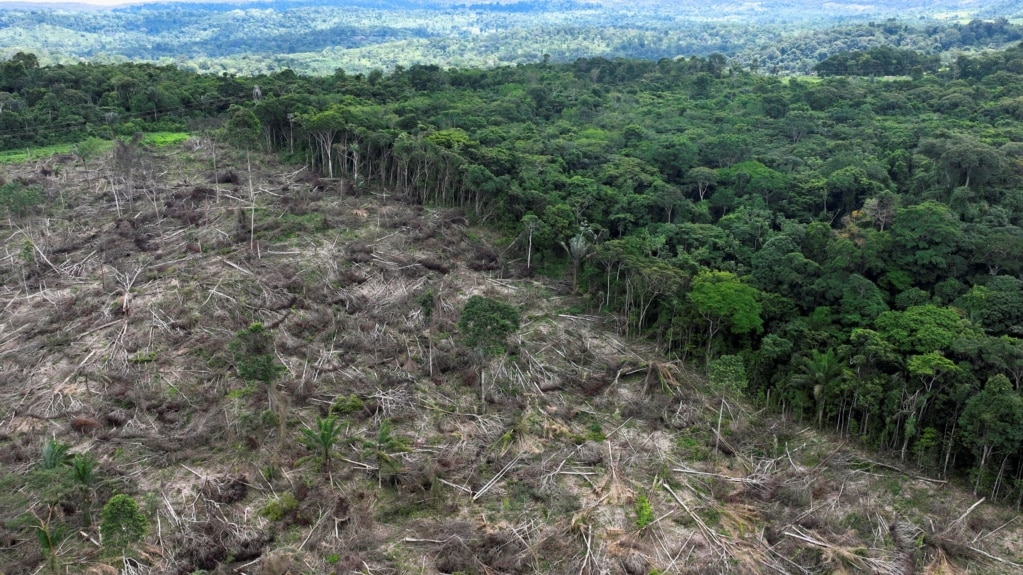A non-profit environmental group says the amount of tropical forest lost around the world in 2022 was equal to an area the size of Switzerland.
Global Forest Watch is an effort supported by the nonprofit World Resources Institute (WRI), which is based in Washington, D.C. WRI recently released its latest data.
The group found that about 41,000 square kilometers of tropical forest was lost in 2022. The effort used forest data collected by the University of Maryland.
The report considered forest loss caused by mechanical clearing for agriculture and woodcutting, and natural causes such as fire, wind and the movements of rivers.
The report said more than 40 percent of the deforestation took place in Brazil. The year 2022 was the final year of former Brazilian President Jair Bolsonaro's four-year term in office.
Last year, losses of Brazilian tropical forest, not including forest fires, reached their recent high point since 2005. Current Brazilian President Luiz Inácio Lula da Silva has promised to end deforestation in the Amazon. He also was president from 2003 to 2011.
The University of Maryland data shows that, if fire is included, about 28,000 square kilometers of Brazilian tropical forest were lost in 2016—the most in the last 20 years.
In November 2021, world leaders at a United Nations environmental conference in Glasgow, Scotland, pledged to stop deforestation by 2030. But tropical forest loss in 2022 was higher than 2021 levels.
"2022 numbers are particularly disheartening," said Francis Seymour, a WRI official. "We had hoped by now to see a signal in the data that we were turning the corner on forest loss."
Global Forest Watch measured what it called primary forests. That includes mature forests that have not been cleared or regrown recently.
The group says such forests protect against climate change because they absorb large amounts of carbon dioxide. Last year's losses in the tropics released 2.7 gigatons of carbon dioxide. That is equal to India's yearly carbon emissions, the report said.
Indonesia and Malaysia were able to keep the rate of their forest losses near record lows. The two nations have continued for several years to limit deforestation caused by the palm oil industry.
Strict Indonesian policies, like suspending new forestry licenses helped bring about the change.
Other forest-rich nations have struggled to keep up with Asia's progress. The Democratic Republic of the Congo and Bolivia had the greatest losses of tropical forest after Brazil.
Reuters reports that some experts blame commodity agriculture for deforestation in Bolivia. Bolivia did not promise to reduce deforestation during the 2021 U.N. conference in Scotland. The experts say Bolivia’s government supports agricultural business expansion.
The Global Forest Watch effort found deforestation in 2022 was more than 10,000 square kilometers greater than the reductions required to prevent the loss of any forests by 2030.
Rod Taylor is WRI's world forests program director. He said deforestation around the world is “trending in the wrong direction.”
The University of Maryland data showed that the world lost 10 percent less northern forest in 2022 than 2021. That was because fewer big fires burned in Russian forests. But Russia still lost 43,000 square kilometers of tree cover last year. That is more than the total tropical forest loss around the world.
I’m Jill Robbins.

